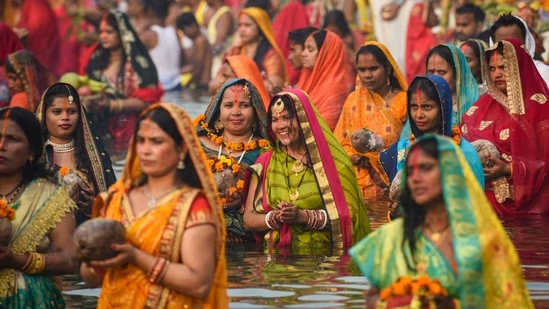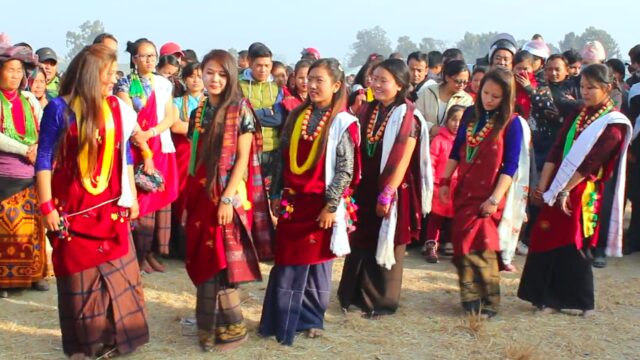Chhath, an ancient Hindu festival dedicated to the worship of the Sun God (Surya) and Chhathi Maiya, is celebrated with great fervor, primarily in the Indian states of Bihar, Jharkhand, Uttar Pradesh, and in parts of Nepal’s Terai region. Known for its rigorous rituals and profound spiritual significance, Chhath is a festival that exemplifies unwavering devotion and a deep connection to nature. It celebrates the vital role of the Sun in sustaining life and embodies the themes of purity, gratitude, and resilience.
The Historical Roots of Chhath Festival
The origins of Chhath are steeped in ancient mythology and the Vedic period. The Rigveda, one of the oldest texts, contains hymns in praise of the Sun God. The legend of Chhath is linked with multiple stories from Hindu mythology. One well-known story attributes the origins of Chhath to King Karna, the son of Surya and Kunti, who is known to have worshiped the Sun with immense devotion and is believed to have introduced the practice of Chhath.
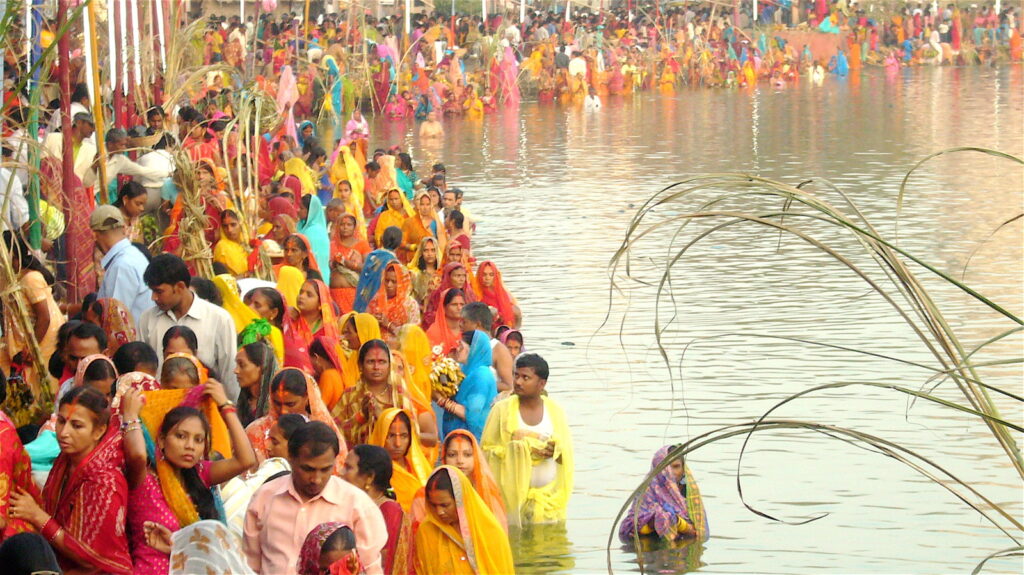
Another tale connects the festival to Lord Rama and his wife, Sita. After their return to Ayodhya from exile, they observed a fast and performed rituals to honor Surya as an expression of gratitude. Inspired by their devotion, people began celebrating Chhath as a festival of gratitude and reverence.
The goddess worshiped during Chhath, known as Chhathi Maiya, is considered a protective mother deity who grants blessings, prosperity, and children to her devotees. The practice is believed to cleanse the soul and body, preparing devotees to receive blessings of health and wealth.
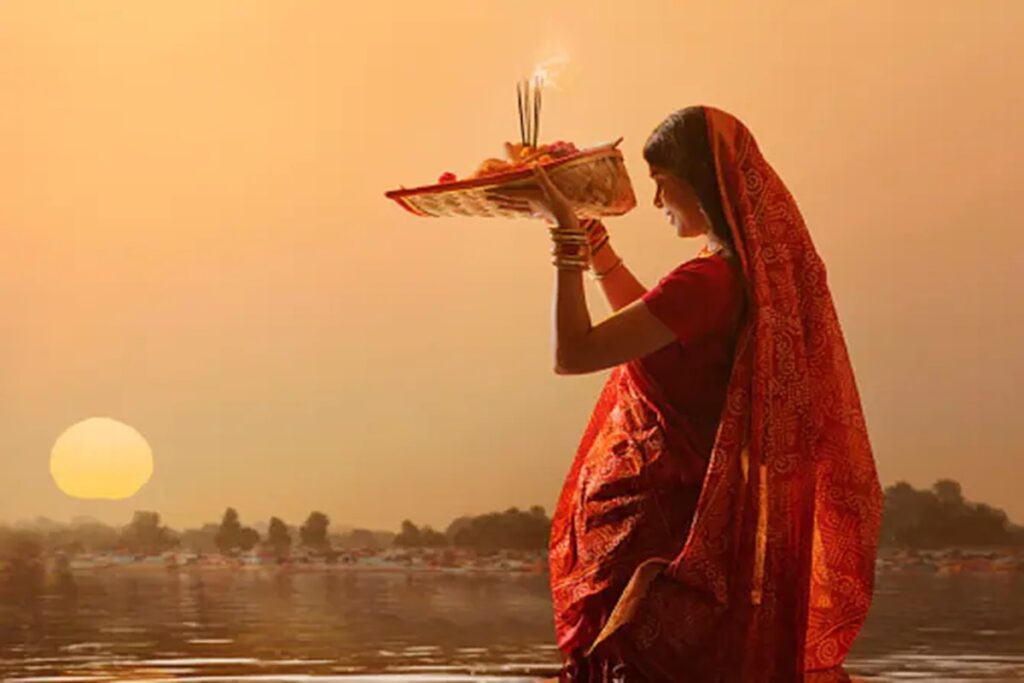
Significance and Rituals of Chhath
Chhath is a four-day festival that involves fasting, purity, and prayers at the riverbanks or any water body. It follows the lunar calendar and generally takes place in the month of Kartik (October-November). Each day of Chhath is marked by unique rituals that are carried out with strict discipline:
Day 1: Nahai-Khai (Bath and Eat)
The first day is dedicated to purification, where devotees take a holy dip in rivers or ponds. After bathing, they bring water from the river to prepare their food, symbolizing purity. The meal, typically rice, dal, and pumpkin with ghee, is kept simple and pure, as devotees cleanse both their body and soul for the days ahead.
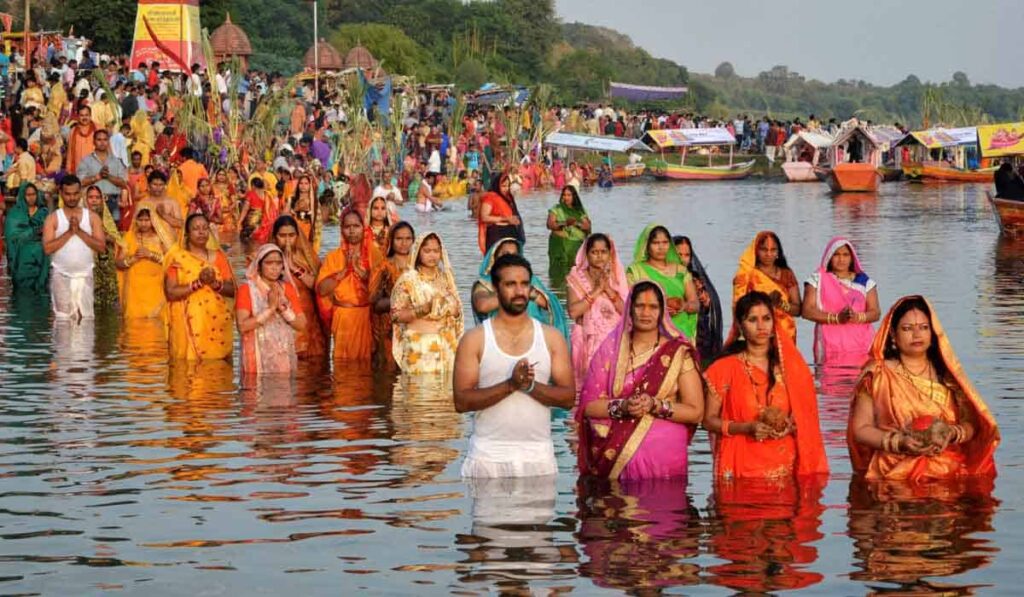
Day 2: Kharna (The Day of Fasting)
On the second day, devotees observe a day-long fast that ends only after sunset. During the day, no food or water is consumed until after performing a special evening ritual. The fast-breaking meal usually includes kheer (rice pudding), roti (Indian bread), and fruits. From this night onward, devotees enter a 36-hour nirjala fast (without water), which is the most challenging part of Chhath.
Day 3: Sandhya Arghya (Evening Offerings to the Sun)
On the third day, devotees prepare offerings (arghya) that include fruits, sweets, and thekua (a traditional sweet made from wheat flour and jaggery) placed in bamboo baskets. Dressed in traditional attire, they go to riverbanks at sunset to make offerings to the setting sun. Devotees stand knee-deep in water, praying to the Sun God and Chhathi Maiya for blessings. The ritual is a moment of profound spirituality as they offer gratitude to the Sun for sustaining life on Earth.
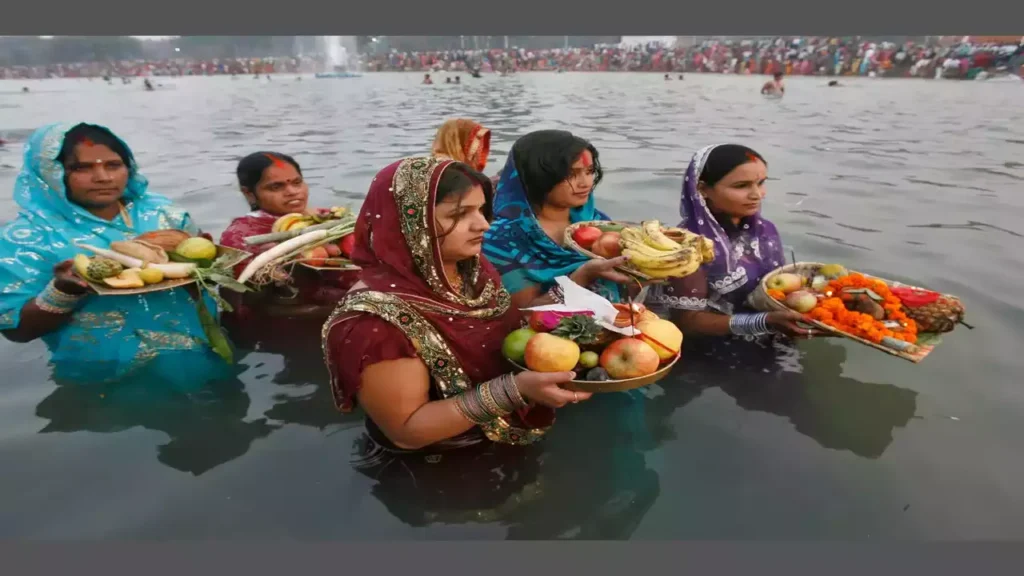
Day 4: Usha Arghya (Morning Offerings to the Sun)
The fourth and final day of Chhath begins early at dawn. Devotees and their families gather once again at the riverbanks to offer prayers to the rising sun, completing their vow. This marks the conclusion of the 36-hour fast as devotees break their fast with the prasad (offerings) that are distributed among family and community members. This act symbolizes gratitude for the blessings received and celebrates the power of nature to bring life and prosperity.
Symbolism and Environmental Connection
Chhath is not only a religious festival but also a reminder of humankind’s connection to nature. The practice of standing in water and fasting without food and water emphasizes the elements of self-discipline and humility. The festival promotes an eco-friendly approach, as the rituals avoid artificial materials, and the offerings are usually biodegradable.
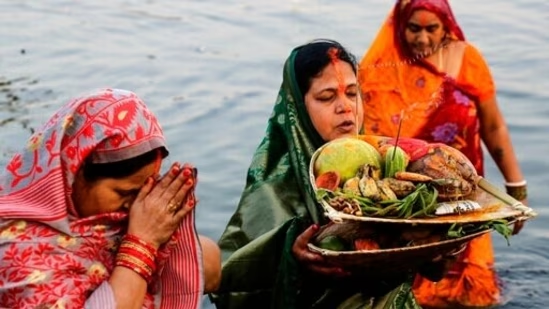
Celebration of Chhath in Today’s World
In recent years, the popularity of Chhath has grown beyond the borders of Bihar and Nepal. Large celebrations are organized in major cities across India and even abroad, where communities of Bihari and Nepali people reside. Local governments and communities come together to prepare riverbanks and water bodies to accommodate the growing number of devotees.
In urban areas, artificial ponds are often set up for those who cannot reach rivers, making it easier for people to perform rituals without harming the environment. As the festival grows, it continues to emphasize traditional values, even while adapting to modern spaces and lifestyles.
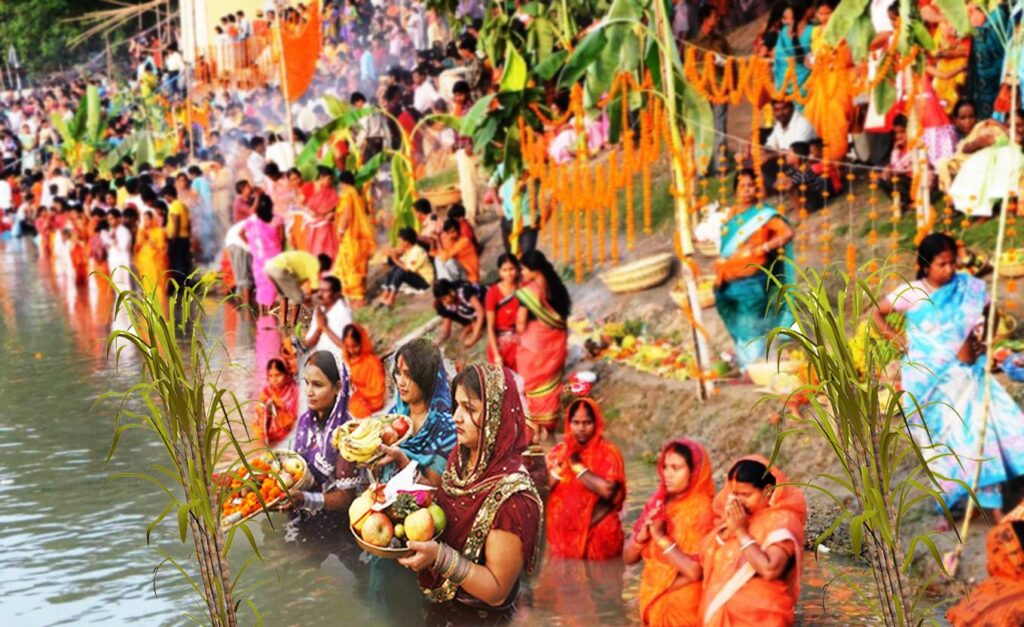
Chhath Puja is a celebration of faith, resilience, and gratitude. It transcends mere ritual to become an expression of reverence for nature and its life-giving forces. The ancient traditions of Chhath connect people to their roots and foster a sense of unity within families and communities.
Through its simplicity, discipline, and deep spirituality, Chhath reminds people of the beauty of devotion, the importance of family bonds, and the blessings of the Sun that nurture life on Earth. As the Chhath festival continues to be celebrated by millions, it remains a powerful example of how ancient traditions can thrive in harmony with nature in the modern world.
